Effective White Goods Recycling in Clearance London
Introduction to White Goods Recycling
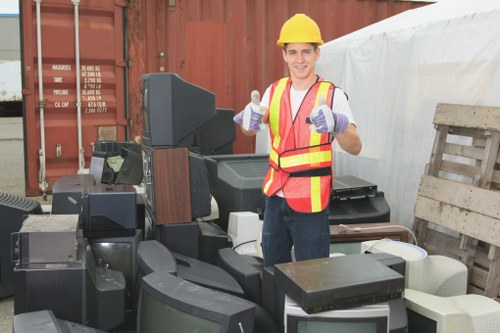
In today’s eco-conscious world, white goods recycling plays a crucial role in promoting sustainability and reducing environmental impact. White goods, which include large household appliances like refrigerators, washing machines, and dishwashers, are essential for modern living. However, when these appliances reach the end of their life cycle, proper disposal becomes imperative to prevent hazardous materials from polluting our environment.
Clearance sales in London offer a unique opportunity for both consumers and recycling centers. Consumers can benefit from significant discounts, while recycling facilities can ensure the safe and efficient processing of old appliances. This synergy not only supports economic savings but also fosters environmental responsibility.
Understanding the process of white goods recycling in clearance London can help you make informed decisions about disposing of your old appliances. This guide explores the benefits, procedures, and best practices for recycling white goods effectively in London’s bustling market.
Why Recycle White Goods?
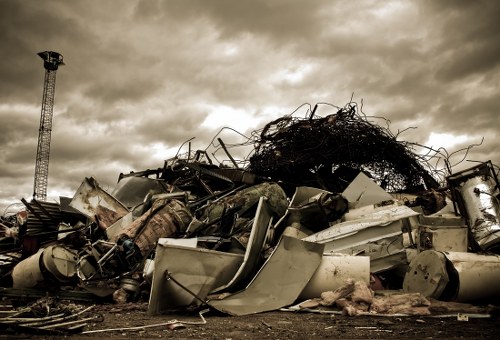
Recycling white goods is essential for several reasons. Firstly, it helps in conserving natural resources. Many parts of white goods are recyclable, including metals like steel and aluminum, which can be reused in manufacturing new products. This reduces the need for virgin materials, thereby conserving natural resources and minimizing environmental degradation.
Secondly, proper recycling prevents the release of harmful substances. Appliances such as refrigerators and air conditioners contain refrigerants and other chemicals that can be detrimental to the environment if not handled correctly. Recycling ensures these substances are disposed of safely, mitigating their impact on the ozone layer and preventing soil and water pollution.
Furthermore, recycling white goods contributes to waste reduction. Landfills are rapidly reaching their capacity, and large appliances take up significant space. By recycling, we can divert these bulky items from landfills, promoting a more sustainable and cleaner environment.
Clearance Sales in London: A Boon for Recycling
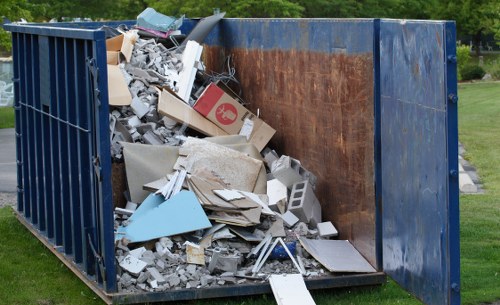
Laden with discounts and deals, clearance sales in London present an excellent opportunity for upgrading household appliances. These sales often result in a high turnover of white goods, leading to an increase in the number of appliances needing disposal. Recycling centers in London are well-equipped to handle this surge, ensuring that appliances are processed efficiently and responsibly.
The strategic location of clearance sales across London makes it convenient for consumers to participate in recycling initiatives. Many clearance events partner with recycling firms, offering on-site collection services or drop-off points for old appliances. This accessibility encourages more people to recycle their white goods, fostering a community-wide effort towards environmental sustainability.
Moreover, clearance sales often include incentives for recycling, such as discounts on new purchases when customers recycle their old appliances. These incentives not only promote recycling but also help in creating a circular economy where resources are continuously reused and repurposed.
Steps to Recycle White Goods in London
1. Assess the Condition of Your Appliance
Before proceeding with recycling, evaluate the condition of your white goods. Determine whether the appliance is still functional or if it’s beyond repair. Functional appliances can be donated or sold, while non-functional ones should be directed towards recycling centers.
Key Points:
- Check for operational status
- Identify any hazardous materials
- Decide on donation or recycling
2. Choose a Certified Recycling Center
Selecting a certified recycling center in London ensures that your appliance is handled responsibly. Certified centers adhere to environmental regulations and have the necessary equipment to process white goods safely.
Benefits of Certified Centers:
- Environmental compliance
- Safe handling of hazardous materials
- Efficient recycling processes
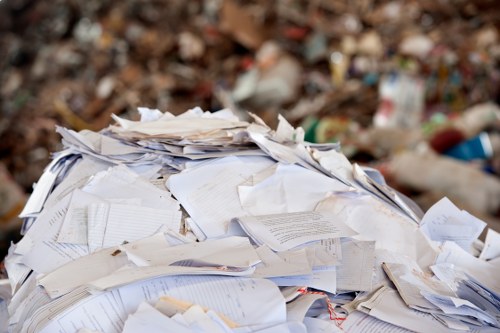
3. Prepare Your Appliance for Recycling
Proper preparation of your white goods simplifies the recycling process. Disconnect the appliance from the power source and remove any detachable parts. Clean the appliance to remove any residual food or chemicals.
Preparation Checklist:
- Unplug from electricity
- Remove detachable components
- Clean thoroughly
4. Arrange for Pickup or Drop-Off
Depending on the recycling center’s services, you can either arrange for a pickup or personally drop off your appliance. Many centers offer free pickup services, especially if you’re purchasing a new appliance from a clearance sale.
Pickup vs. Drop-Off:
- Convenience of home pickup
- Cost considerations
- Location of recycling centers
Benefits of Recycling Through Clearance Sales
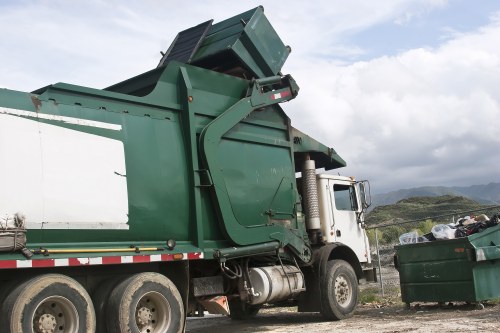
Participating in white goods recycling during clearance sales offers multiple benefits. Firstly, it provides a hassle-free way to dispose of old appliances while making space for new ones. With high traffic during sales, recycling centers can manage the influx efficiently, ensuring timely processing.
Additionally, recycling through clearance sales often comes with cost benefits. Many retailers offer recycling services at no extra charge or provide discounts on new purchases when you recycle your old appliance. This not only makes recycling economically attractive but also encourages more individuals to participate.
Moreover, integrating recycling into clearance sales promotes environmental stewardship among consumers. It raises awareness about the importance of recycling and encourages sustainable practices, contributing to a larger movement towards a greener London.
Environmental Impact of White Goods Recycling
Reducing Carbon Footprint
Recycling white goods significantly reduces the carbon footprint associated with manufacturing new appliances. By reusing materials from old appliances, the energy required for producing new materials is minimized, leading to lower greenhouse gas emissions.
Carbon Savings:
- Energy conservation in material production
- Reduction in greenhouse gas emissions
- Less reliance on fossil fuels
Conserving Resources
Recycling helps conserve vital natural resources by reusing materials like metals, plastics, and glass. This conservation is essential for maintaining the balance of ecosystems and ensuring that resources are available for future generations.
Resource Conservation Benefits:
- Extended life of natural resources
- Reduced need for mining and extraction
- Preservation of biodiversity
Minimizing Waste
By diverting white goods from landfills, recycling minimizes the amount of waste generated. This reduction alleviates the pressure on landfill sites and decreases the environmental issues associated with waste accumulation, such as soil contamination and water pollution.
Waste Management Advantages:
- Less landfill usage
- Decreased environmental pollution
- Improved waste processing efficiency
Challenges in White Goods Recycling
Despite its benefits, white goods recycling faces several challenges. One of the primary obstacles is the safe disposal of hazardous materials contained within appliances. Substances like refrigerants, oils, and heavy metals require specialized handling to prevent environmental contamination.
Another challenge is the logistical aspect of collecting and transporting large appliances. The size and weight of white goods make transportation costly and complicated, especially in densely populated areas like London.
Additionally, consumer awareness and participation are crucial for successful recycling programs. Educating the public about the importance of recycling and providing accessible recycling options are essential steps to overcome these challenges.
Addressing Hazardous Materials
Implementing strict regulations and providing training for recycling center staff can ensure the safe handling of hazardous materials. Using advanced technology for the removal and neutralization of harmful substances is also vital.
Solutions:
- Regulatory compliance
- Training and certification for personnel
- Advanced recycling technologies
Best Practices for Consumers

Proper Disposal Techniques
Consumers play a pivotal role in the success of white goods recycling. Adopting proper disposal techniques ensures that appliances are recycled efficiently and safely. This includes following manufacturer guidelines for disposal and seeking out certified recycling centers.
Disposal Tips:
- Refer to the appliance’s manual for disposal instructions
- Choose certified recycling facilities
- Participate in community recycling programs
Choosing Sustainable Appliances
When purchasing new white goods, opting for energy-efficient models can reduce environmental impact. Energy Star-rated appliances consume less power and have a longer lifespan, making them a sustainable choice for consumers.
Sustainable Choices:
- Energy-efficient ratings
- Durable and long-lasting designs
- Reparable components
Supporting Recycling Initiatives
Engaging with and supporting local recycling initiatives can amplify the impact of individual efforts. Volunteering, spreading awareness, and participating in recycling drives contribute to a collective movement towards sustainability.
How to Support:
- Join local environmental groups
- Promote recycling programs
- Advocate for better recycling infrastructure
Government Policies and Incentives
The London government has implemented various policies to encourage white goods recycling. These include regulations mandating the proper disposal of large appliances and providing incentives for both consumers and businesses to participate in recycling programs.
Incentives such as tax rebates, grants for recycling businesses, and subsidies for purchasing energy-efficient appliances can motivate greater involvement in recycling efforts. These policies not only support environmental goals but also stimulate the economy by creating jobs in the recycling sector.
Additionally, the government collaborates with private sectors to develop and enhance recycling infrastructure, ensuring that services are widely accessible and efficient.
Regulatory Framework
Understanding the regulatory framework is essential for compliance and effective recycling. Key regulations include the Waste Electrical and Electronic Equipment (WEEE) Directive, which outlines the responsibilities of manufacturers and consumers in disposing of electronic waste.
Key Regulations:
- WEEE Directive compliance
- Local disposal laws
- Environmental protection standards
Incentive Programs
Incentive programs encourage both individuals and businesses to engage in recycling. Programs may offer financial rewards, recognition, or other benefits for participating in recycling initiatives.
Types of Incentives:
- Tax credits for recycling businesses
- Discounts on new appliances
- Grants for community recycling projects
Technological Advancements in Recycling
Advancements in recycling technology have significantly improved the efficiency and effectiveness of white goods recycling. Modern recycling facilities utilize automated processes and innovative machinery to dismantle and sort appliances with precision.
These technologies ensure that materials are separated accurately, reducing contamination and increasing the quality of recycled materials. Additionally, advancements in material recovery techniques allow for the extraction of valuable resources that were previously difficult to reclaim.
Furthermore, digital tracking systems enhance the transparency and accountability of the recycling process. Consumers can track the journey of their appliances, ensuring that they are recycled responsibly.
Automated Dismantling
Automated systems streamline the dismantling of appliances, making the recycling process faster and more efficient. These systems can disassemble complex components with minimal human intervention, reducing labor costs and increasing throughput.
Benefits of Automation:
- Increased processing speed
- Higher accuracy in material separation
- Reduced operational costs
Advanced Material Recovery
Advanced recovery methods enable the extraction of rare and valuable materials from white goods. Techniques such as chemical processing and precision sorting help reclaim metals, plastics, and glass, which can be reused in manufacturing new products.
Recovery Techniques:
- Chemical extraction
- Magnetic sorting
- Optical sorting
Digital Tracking and Transparency
Implementing digital tracking systems ensures that every appliance is accounted for throughout the recycling process. This transparency builds trust with consumers and regulatory bodies, ensuring compliance and promoting responsible recycling practices.
Tracking Benefits:
- Enhanced accountability
- Improved transparency
- Better resource management
Economic Benefits of Recycling White Goods
Recycling white goods not only benefits the environment but also boosts the economy. The recycling industry creates numerous jobs, from collection and transportation to processing and manufacturing. These jobs contribute to the local economy, providing employment opportunities and stimulating economic growth.
Moreover, recycling reduces the costs associated with waste management and raw material procurement. By reusing materials, businesses can lower their production costs, which can translate into lower prices for consumers.
Additionally, the resale of refurbished appliances contributes to the circular economy, where goods are reused and recycled rather than discarded. This model promotes sustainability while supporting economic resilience.
Job Creation
The recycling sector is a significant source of employment, offering roles in various stages of the recycling process. From manual labor to high-tech positions, the industry provides a diverse range of job opportunities.
Employment Opportunities:
- Collection and logistics
- Processing and dismantling
- Research and development
Cost Savings
Recycling helps businesses save on raw materials by providing a steady supply of secondary materials. These savings can enhance profitability and enable companies to invest in further sustainable practices.
Savings Areas:
- Reduced raw material costs
- Lower waste disposal fees
- Enhanced operational efficiency
Circular Economy Promotion
The circular economy model, supported by recycling, ensures that products and materials are kept in use for as long as possible. This approach reduces waste, conserves resources, and promotes sustainable economic growth.
Circular Economy Advantages:
- Prolonged product life cycles
- Resource efficiency
- Sustainable development
Future of White Goods Recycling in London
The future of white goods recycling in London is promising, driven by technological advancements, supportive government policies, and increasing consumer awareness. As the demand for sustainable practices grows, recycling facilities will continue to innovate, improving efficiency and expanding their capabilities.
Emerging technologies such as artificial intelligence and machine learning will further enhance the sorting and processing of recycled materials, making the recycling process more precise and cost-effective. These innovations will enable recycling centers to handle a larger volume of appliances with greater accuracy.
Additionally, the trend towards smart appliances, which are designed with recyclability in mind, will facilitate easier disassembly and material recovery. Manufacturers are increasingly incorporating recyclable materials and modular designs, simplifying the recycling process and reducing environmental impact.
Technological Innovations
Continued investment in recycling technology will drive improvements in the industry. Innovations such as robotic dismantling and advanced sorting systems will enhance the efficiency and effectiveness of recycling operations.
Key Innovations:
- Robotic disassembly
- AI-driven sorting
- Enhanced material recovery processes
Smart Appliance Design
Designing appliances with recycling in mind ensures that they can be easily disassembled and processed at the end of their life cycle. Features like modular components and standardized materials facilitate efficient recycling and material recovery.
Smart Design Features:
- Modular and detachable parts
- Use of recyclable materials
- Standardized components for easy sorting
Increased Consumer Participation
As awareness about environmental sustainability grows, more consumers are willing to participate in recycling programs. Educational campaigns and convenient recycling options will further boost participation rates, ensuring the success of white goods recycling initiatives.
Strategies to Increase Participation:
- Comprehensive public education
- Convenient recycling services
- Incentive-based programs
Conclusion
White goods recycling in clearance London is a vital component of sustainable living. It offers numerous environmental and economic benefits, from conserving resources and reducing waste to creating job opportunities and supporting the circular economy.
By understanding the recycling process, choosing certified centers, and participating in clearance sales, consumers can contribute significantly to environmental conservation. The collaboration between government policies, technological advancements, and consumer participation will shape the future of white goods recycling, making London a model of sustainability.
Embracing recycling not only helps preserve the environment but also fosters a sense of community responsibility. Contact us today to learn more about how you can participate in white goods recycling and make a positive impact on our planet.
Frequently Asked Questions
What are white goods?
White goods refer to large household appliances such as refrigerators, washing machines, dishwashers, and ovens. They are typically called white goods due to their original color, though they are now available in various colors.
Why is it important to recycle white goods?
Recycling white goods is crucial for conserving natural resources, reducing landfill waste, and preventing the release of harmful substances into the environment. It also supports the recycling industry and promotes sustainable practices.
How can I find a certified recycling center in London?
You can find certified recycling centers by searching online directories, contacting local waste management authorities, or asking retailers during clearance sales for recommended recycling partners.
Do I need to pay for recycling my white goods?
Many recycling centers offer free recycling services, especially when you purchase a new appliance. However, some centers may charge a fee depending on the type and condition of the appliance. It’s best to check with the recycling center beforehand.
Can I donate my old white goods?
Yes, if your appliance is still functional, you can donate it to charities or non-profit organizations. Donating your appliance not only helps others but also reduces waste and promotes recycling.
Additional Resources:
Get Started with White Goods Recycling Today
Taking the first step towards recycling your white goods can make a significant difference. Whether you’re upgrading your appliances during a clearance sale or simply looking to dispose of an old appliance, proper recycling is essential.
Steps to Begin:
- Identify appliances that need recycling
- Choose a certified recycling center in London
- Prepare and transport your appliance responsibly
- Participate in recycling programs and incentives
By following these steps, you contribute to a sustainable future and help preserve the environment for generations to come. Book your service now and join the movement towards efficient and responsible white goods recycling in London.
Stay Informed:
- Subscribe to environmental newsletters
- Join local recycling groups
- Attend community recycling events
